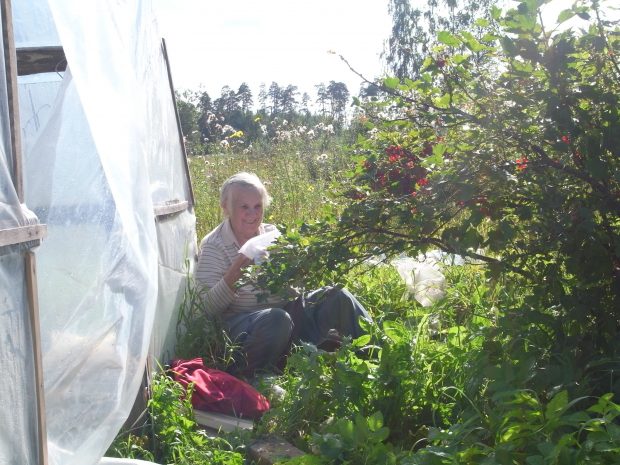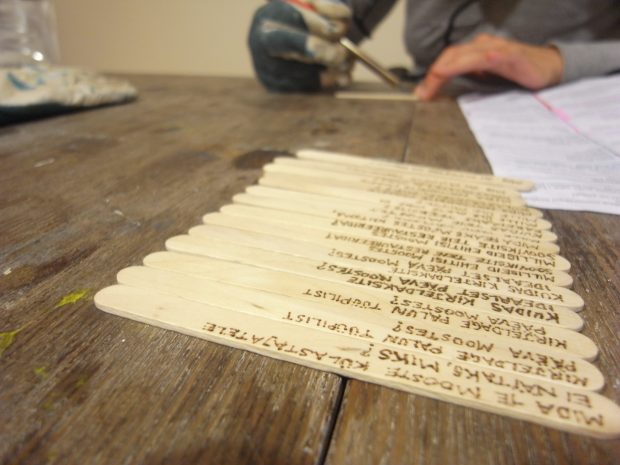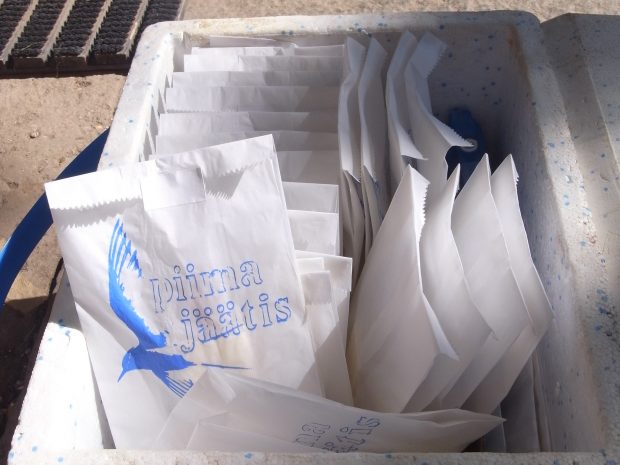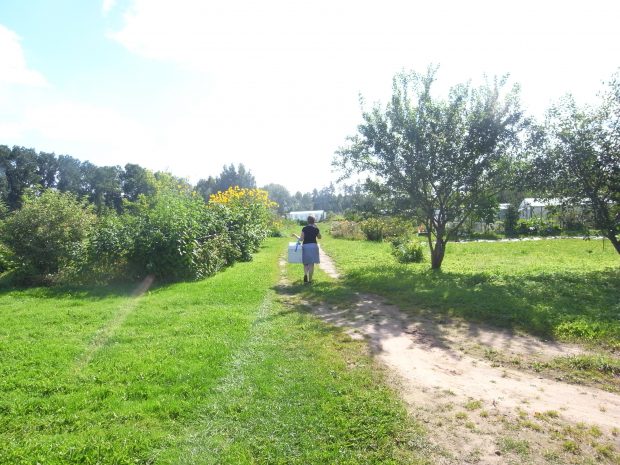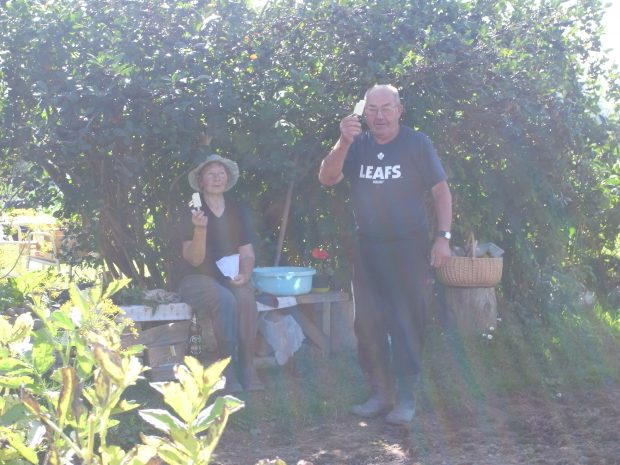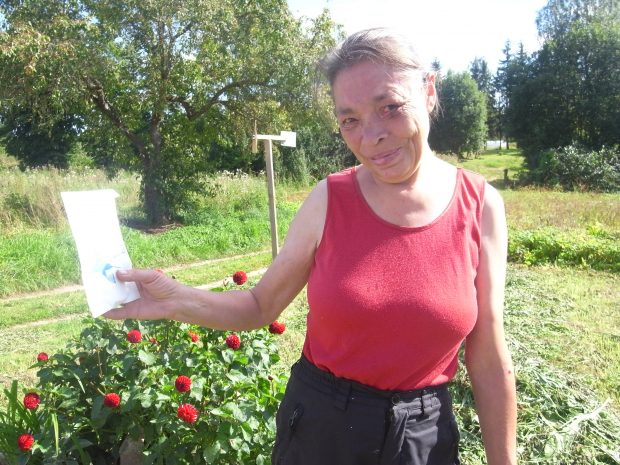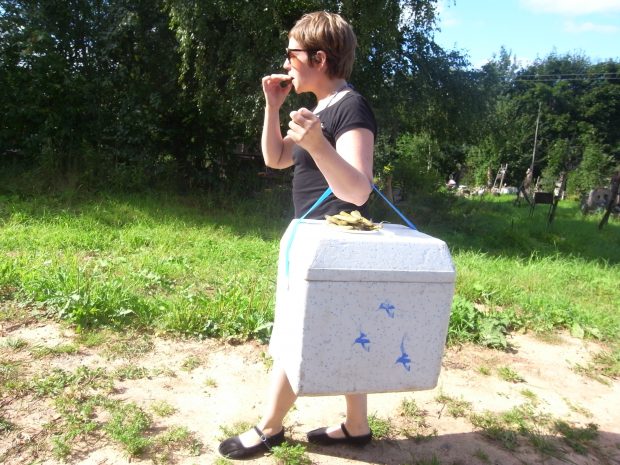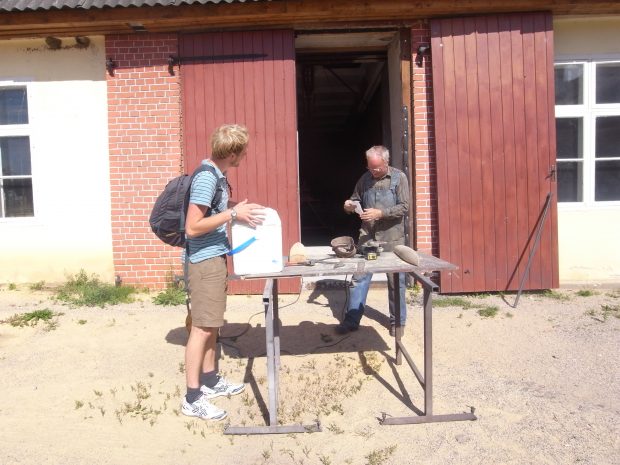Between the 15th of July and the 31st of August we spent a six week MOKS residency in the small Estonian village of Mooste. Our work employed a variety of participative and interactive techniques to explore Estonian identity, and the relationships between people, place and history.
Milk messengers
We were told about how the milkman acted as a messenger for the Estonian resistance during the soviet occupation, helping to coordinate the path to independence and the next revolution.
We thought about our own situation in Mooste, trying (at times quite hopelessly) to collect information, gauge opinion and make contact with the locals. Maybe we could communicate with the village through the distribution of milk, a tried and tested method?
Milk messages #1
We decided to slip questions onto the packages of milk sold in the two local shops, a questionnaire that attempted to solicit responses from local consumers. We doubted that we would receive many responses, if any, but the activity may have playfully activated memories and ideas surrounding independence, national or local identity, and the relationship we have to our immediate environment. We needed to start somewhere.
Milk messages #2
Estonians make great ice cream! One day we found a question about Estonia on one of our lolly sticks, an advertising gimmick that reminded us of the English tradition of writing jokes onto the same wooden sticks. We decided to create special homemade lollies with our own questions printed onto the sticks. These were distributed one sunny day to those we found working in the village, primarily to the elderly ladies and men working on the allotments. We were given beans, courgettes and potatoes in return!
We were told that Estonian’s often associate ice cream with independence due to the flood of new brands that arrived following the departure of the soviet occupation.
The questions:
What would you show a visitor in Mooste and why?
What would you not show a visitor in Mooste and why?
Can you send us a picture of Mooste that you would choose as a postcard?
Are you proud of Mooste?
What are you proud of and what are you not proud of?
What is a Mooste tradition? What is tradition in Mooste?
What is typical Moostonian?
What is special about Mooste?
How would you describe a typical Moostonian?
How would you describe a typical day in Mooste?
How would you describe a perfect day in Mooste?
What buildings in Mooste would you like to restore?
What is worth fighting for/protecting in Mooste?
How would you improve Mooste?
What do you think were the best times for Mooste?
What place do you most identify with in Mooste?
Further MOKS Residency interventions:
SAND MAPPING
THE BARONS CLOTHES
WINDOW PICTURES
THE MOPED PROCESSION
EXHIBITION
